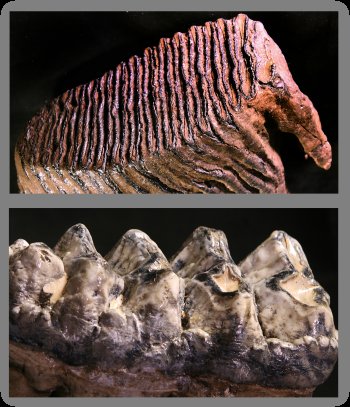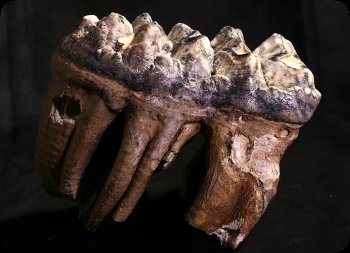Mammoth Versus Mastodon
You say, “Toh-may-toh.” I say, “Toh-mah-toh.”
When it comes to Mammoths and Mastodons, the difference is more than a matter of pronunciation. They are very different prehistoric animals with distinct evolutionary and natural histories. While Mammoths are close relatives of modern elephants, Mastodons are only distantly related to the others. Mammoths and Mastodons inhabited separate habitats during the Pleistocene Era (2.6 million to 12,000 years ago). They are often confused, and their scientific names don’t help matters much. The American Mastodon is Mammut americanum, while the Wooly Mammoth is known as Mammuthus primigenius.
To understand at least one of the differences, we can look at the structure of their teeth. The Mastodon molar has high ridges (Mastodon means “nipple tooth”) while the Mammoth molar has plates combined together to create a grinding surface, not unlike the harvesting mechanism of a modern combine. Mastodons were equipped to browse in spruce forest environments and consume woody sticks, twigs, and brush, while Mammoths grazed on grass in steppe-like environments. Clues in the fossil record can help scientists reconstruct past environments and determine how extinct creatures, like Mammoths and Mastodons, survived and thrived thousands or even millions of years ago.







